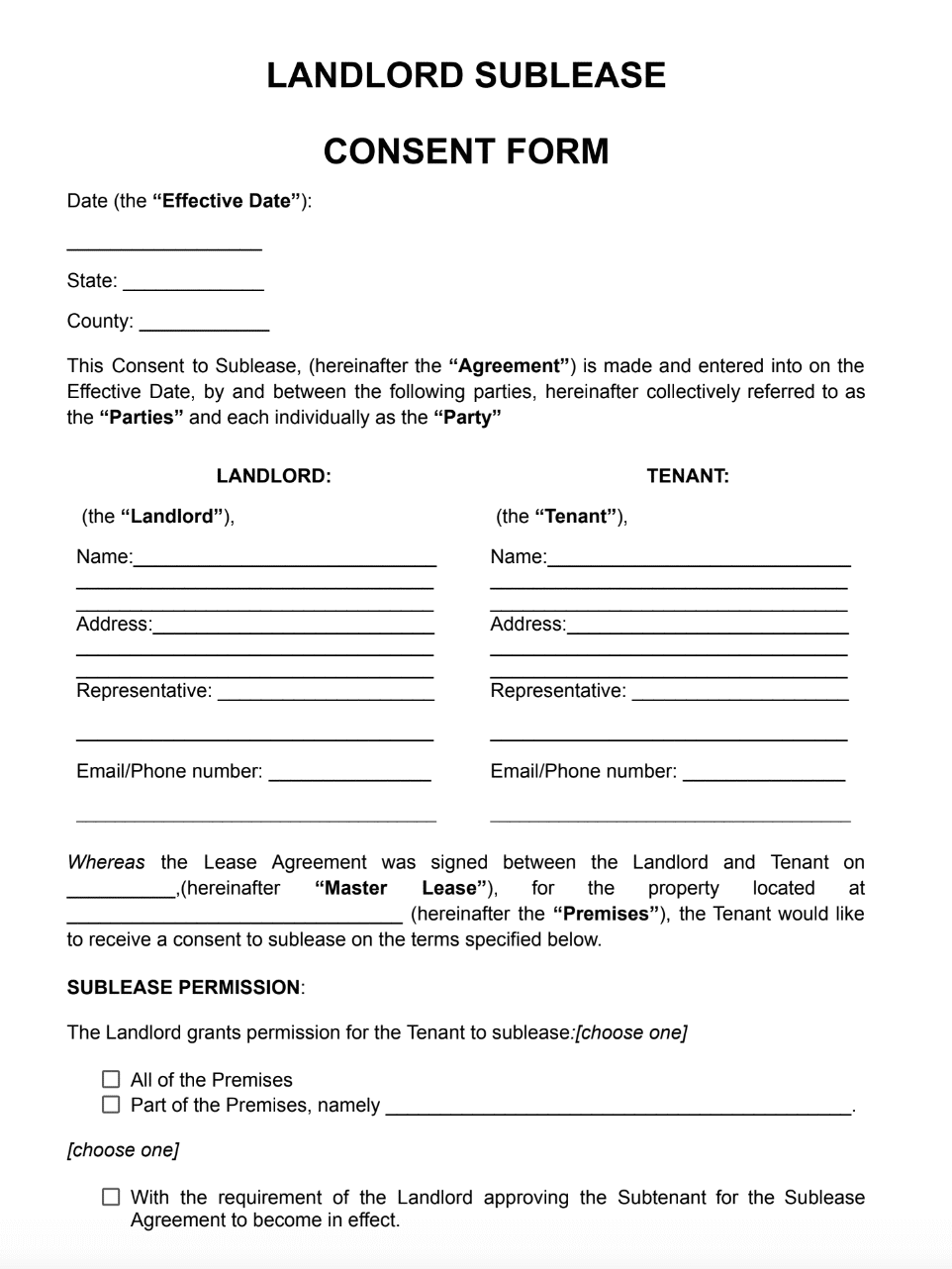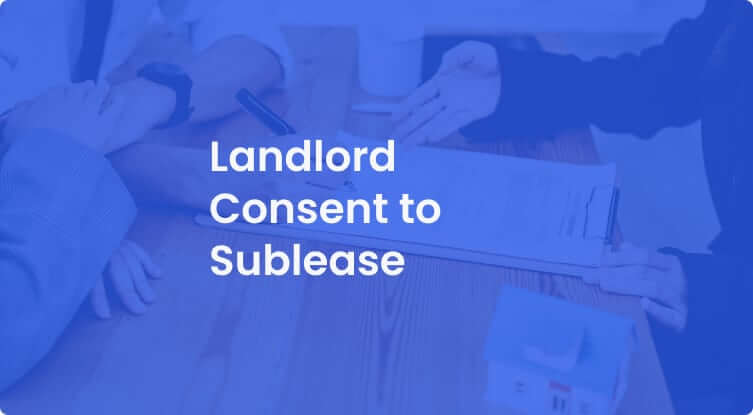When to Use a Landlord Consent to Sublease
For both the tenant and landlord, consent to sublease holds significant value across various circumstances:
- Subleasing: When a tenant desires to temporarily assign their leasehold rights to someone else.
- Legal safeguard: The landlord’s consent serves as a protective measure for all parties – it ensures mutual agreement on the terms of the new sublease agreement with landlord.
- Dispute prevention: This document mitigates the potential for future legal disputes arising from misunderstandings or conflicting interpretations.
- Lease requirement: Such consent must be obtained if the original lease requires the landlord’s permission before subletting the premises.
- Documented proof: It provides recorded evidence that shows the owner has given authority for subleasing.
Terms and Parties of a Landlord Consent to Sublease
The primary parties and terms found in the landlord’s consent to sublease are as follows:
- Landlord: The person who owns the property and initially granted the lease to the tenant. They are responsible for permitting the sublease.
- Tenant: The party that entered into the original lease agreement with the landlord and has expressed a desire to sublet the property.
- Subtenant: This individual seeks to obtain the right to occupy and utilize the property from the original tenant through a sublease arrangement.
- Subletting: This is a process whereby a tenant temporarily transfers their right of occupancy on leased premises to another person for an agreed-upon period. Nonetheless, the initial tenant must fulfill legal obligations as well as responsibilities indicated in the original lease agreement.
- Consent: The formal permission granted by the landlord to allow the tenant to engage in the subletting process.
How to Create a Landlord Consent to Sublease
Follow these steps to obtain a landlord’s consent to sublease:
- Discuss with your landlord: First of all, secure prior approval. As a tenant, you must engage in a dialogue with the landlord, effectively expressing your intention to sublet the premises.
- Identify a subtenant: Subsequently, the tenant must find a prospective subtenant. The individual must be reliable and willing to assume the temporary occupancy of the property.
- Complete the template: Fill out the landlord consent to sublease template with all necessary details: the names of all parties, a description of the property, the duration of the intended sublease, and any additional conditions or stipulations that may apply.
- Obtain signatures: All parties must sign the document to make it legally binding.
If you think about subletting your leased space, obtaining a well-drafted landlord’s consent is a crucial step that should not be disregarded. Visit Jurizmo and get the consent done right. A free landlord’s consent to sublease template can be customized to your requirements, so you may feel confident that any essential clauses or details are not missed.
 Preview
Preview

 Preview
Preview
